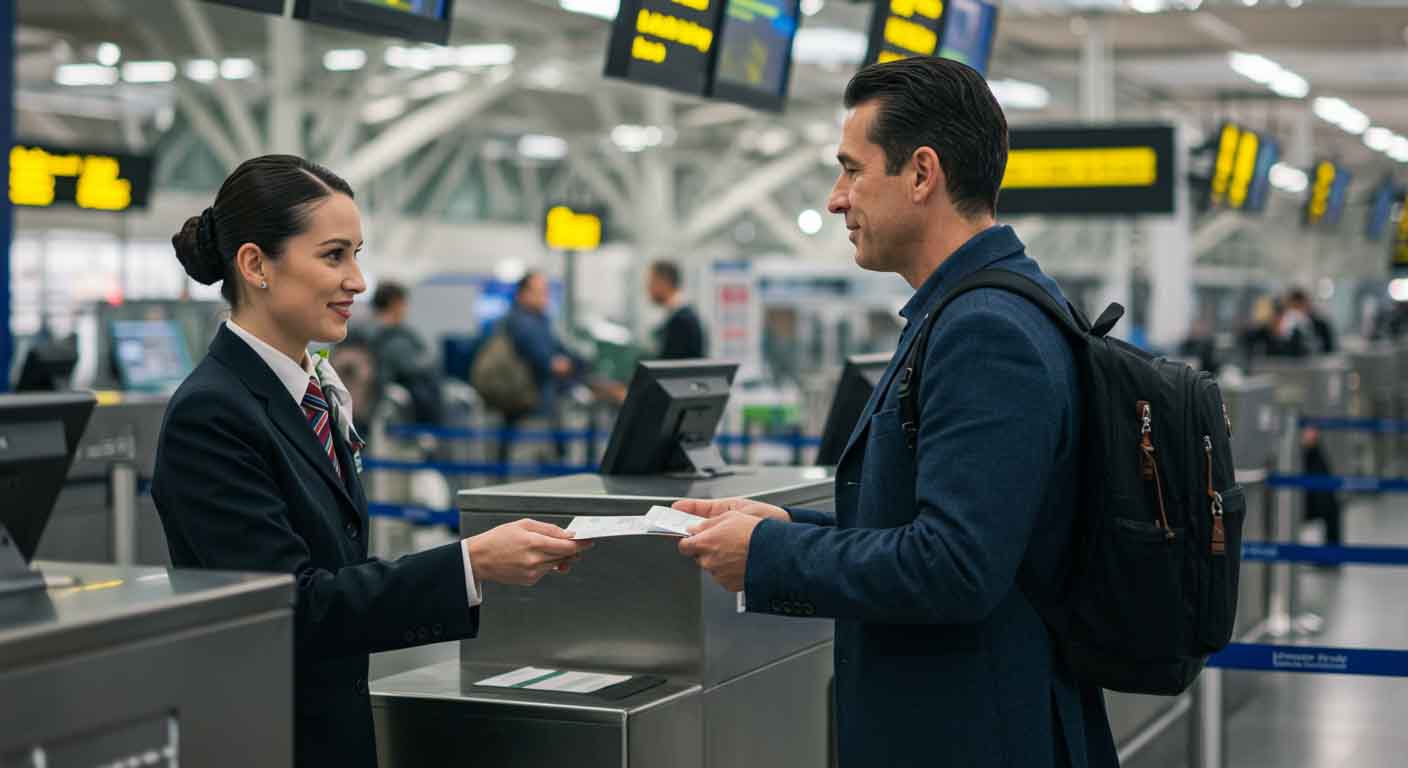Welcome to your comprehensive guide to navigating London Heathrow Airport, one of the world’s busiest and most iconic aviation hubs. This summary aims to distill the essential information from our detailed nine-part series, providing you with a seamless overview from pre-arrival planning right through to making the most of your time at the airport and departing smoothly. Think of this as your friendly companion, ensuring your Heathrow experience is as stress-free and enjoyable as possible, whether you’re a first-time visitor or a seasoned traveler.
 Heathrow is more than just an airport; it’s a miniature city, a global crossroads teeming with activity and connecting millions of passengers to nearly 90 countries worldwide. Its story began modestly in the 1930s, but it truly blossomed after World War II, evolving into the international giant we see today. Handling tens of millions of passengers annually, Heathrow operates with impressive efficiency across its multiple runways and terminals. As of May 2025, these include Terminal 2 (The Queen’s Terminal), primarily for Star Alliance airlines; Terminal 3, a base for many Oneworld carriers like American Airlines and Qantas, as well as Virgin Atlantic and Emirates; Terminal 4, serving a mix of airlines often including SkyTeam members; and Terminal 5, the dedicated, state-of-the-art hub for British Airways and Iberia. Each terminal has its own character and airline concentrations, so knowing yours is key.
Heathrow is more than just an airport; it’s a miniature city, a global crossroads teeming with activity and connecting millions of passengers to nearly 90 countries worldwide. Its story began modestly in the 1930s, but it truly blossomed after World War II, evolving into the international giant we see today. Handling tens of millions of passengers annually, Heathrow operates with impressive efficiency across its multiple runways and terminals. As of May 2025, these include Terminal 2 (The Queen’s Terminal), primarily for Star Alliance airlines; Terminal 3, a base for many Oneworld carriers like American Airlines and Qantas, as well as Virgin Atlantic and Emirates; Terminal 4, serving a mix of airlines often including SkyTeam members; and Terminal 5, the dedicated, state-of-the-art hub for British Airways and Iberia. Each terminal has its own character and airline concentrations, so knowing yours is key.
Before you even set foot in Heathrow, a little pre-arrival planning can make a world of difference. When booking your flights, consider looking well in advance, especially for peak travel times, and compare prices across different platforms, though booking directly with an airline can sometimes offer added benefits. Crucially, investigate UK visa and entry requirements specific to your nationality by consulting the official UK government website, Gov.uk – this is non-negotiable for a smooth entry. Your passport should also be valid for at least six months beyond your intended stay. Packing smart for the UK means preparing for variable weather with layers and comfortable shoes for navigating the vast airport. Don’t forget travel adaptors for the UK’s three-pin plugs. Confirming which terminal your airline uses is vital; check your booking confirmation or the airline/Heathrow website close to your travel date. To further streamline your journey, consider pre-booking services such as airport parking (short-stay, long-stay, or valet), access to airport lounges for added comfort, Fast Track security to expedite screening, and onward transportation like the Heathrow Express or National Express coaches. Pre-booking special assistance if required is also highly recommended.
Upon touchdown, the arrivals process begins. You’ll first proceed through immigration and Border Control. Many nationalities with biometric passports can use the efficient eGates. Others will see a Border Force officer; have your passport, visa, and any necessary documents ready. After immigration, follow signs to Baggage Reclaim, locate your flight on the information screens to find the correct carousel, and collect your luggage. In the rare event of lost or damaged bags, report it immediately to your airline’s handling agent in the baggage hall. The final step before entering the public arrivals area is passing through UK Customs. Use the Green Channel if you have nothing to declare, or the Red Channel if you have goods exceeding allowances or restricted items. Once through, the Arrivals Hall offers a range of facilities: meeting points, information desks, currency exchange, ATMs, SIM card vendors, and left luggage services.
Heathrow boasts excellent transport links for your onward journey. The Heathrow Express is the fastest rail link to London Paddington (15 minutes), while the Elizabeth Line offers modern, direct services to various key locations across London and beyond. The London Underground’s Piccadilly Line is the most economical, albeit slower, option into the city. For travel across the UK, National Express coaches provide an extensive network. Taxis (iconic black cabs from ranks) and pre-booked private hire vehicles (minicabs) are also available, alongside ride-sharing apps like Uber and Bolt, which have designated pick-up areas. If you’re renting a car, major rental companies are present, but book in advance and be mindful of London’s Congestion Charge and ULEZ if driving centrally. Free inter-terminal transfers via walkways, trains, or shuttle buses make navigating between terminals straightforward if you have a connecting flight or need to access different transport hubs.
When it’s time to depart, a smooth check-in process sets the tone. Online check-in via airline websites or apps is highly recommended and often allows you to head straight to security if you only have hand luggage. Self-service kiosks are available for printing boarding passes and luggage tags, while traditional airline check-in desks cater to all needs. Once checked in, proceed to the baggage drop desks. Some airlines offer early or twilight check-in for added convenience. Navigating airport security requires preparation: ensure liquids, aerosols, and gels in hand luggage are in containers of 100ml or less, all fitting into a single, transparent, resealable one-litre bag. Remove large electronics like laptops for separate screening. Fast Track security can be a valuable time-saver. Once through security, you’ll enter the departure lounge. Check the flight information display screens (FIDS) regularly for your gate number and boarding status, as this information is usually announced closer to the departure time. Allow ample time to reach your gate, especially in larger terminals.
With time to spare before your flight, Heathrow offers a wealth of amenities. It’s a shopper’s paradise, featuring luxury boutiques like Burberry and Harrods, high-street favourites, essential travel stores, and extensive Duty-Free shopping for international travellers. Dining options are equally diverse, ranging from quick coffee shops and grab-and-go outlets to casual cafes, traditional British pubs, and fine dining experiences curated by celebrity chefs, catering to all tastes and dietary requirements. For a more tranquil environment, consider accessing an airport lounge. Airline-specific lounges are available for premium passengers, while paid-access lounges like Plaza Premium or Aspire offer comfort and complimentary refreshments to all travellers for a fee. Beyond shopping and dining, you can find quiet zones, multi-faith prayer rooms, children’s play areas, and sometimes art installations or spa services. Free Wi-Fi and numerous charging points keep you connected.
Heathrow also provides a comprehensive suite of essential services. Airport information desks and roaming Passenger Ambassadors are readily available to assist with queries. Pharmacies stock last-minute medical needs, and medical facilities are on hand for emergencies. The airport is committed to accessibility, offering pre-bookable special assistance for passengers with reduced mobility or other disabilities, including wheelchair support and help navigating the terminals. If you lose an item, contact the airline for belongings left on aircraft, or the Heathrow Lost Property service for items lost in the terminal. Eligible non-UK residents can claim VAT refunds on goods at designated desks before checking in luggage, but allow extra time for this process. Business travelers can find workstations in lounges and throughout the terminals. Remember, smoking, including e-cigarettes, is only permitted in designated outdoor areas before security.
For those with early departures, late arrivals, or long layovers, numerous on-airport and nearby airport hotels offer convenient accommodation, from budget to luxury, many with direct terminal access or shuttle services. Day rooms are also an option for shorter rests. If you have an extended layover (6+ hours) and the necessary visa, a quick excursion might be possible. Windsor Castle is a popular, relatively accessible option. However, always be extremely mindful of travel times and the need to return well in advance for security and boarding; for shorter layovers, staying within the airport is usually less stressful.
Finally, a few top tips to ensure your Heathrow journey is as smooth as possible: always allow plenty of time, as unexpected delays can occur. Double-check your terminal with your airline well in advance. Prepare for security by having your liquids and electronics ready. Familiarise yourself with your transport options to and from the airport. Most importantly, always consult the official London Heathrow Airport website (heathrow.com) and your airline’s website for the very latest information on flight schedules, terminal allocations, security procedures, and any health or visa requirements, as these can change. This guide, current as of May 2025, aims to be your helpful companion, but those official sources are your definitive go-to for real-time updates. We wish you a fantastic and seamless experience at London Heathrow Airport.

